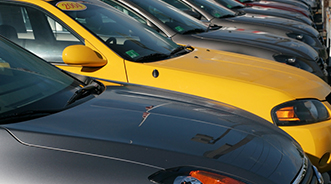Why Auction Volume Is in Position to Grow

Want to know a good indicator if auction volume is going to keep growing off of 2012 — a year where the industry posted its first uptick since 2006?
Used-car managers ought to watch new-vehicle sales activity on the other side of their franchised showrooms. Or if managers run an independent lot, they should keep tabs on action from the new-model stores in their market.
“New-car sales are basically the raw material of auction volume. And new-car sales look like they’re going to be approaching past peaks, the over-16 million annual level,” said Ira Silver, economist for the National Auto Auction Association.
Silver indicated that franchised dealers turned 14.4 million new units in 2012, the highest level since 2007. As a result, auction volume made its first upward movement in six years. A 2.4-percent lift in the fourth quarter pushed the industry to a 0.5-percent volume uptick for the year.
“That was a fairly big deal, although I had pretty much expected it,” Silver said. “A lot of our business is related to past new-car sales. The turnaround in new-car sales starting in the second half of 2009 through now is finally starting to come back to us positively. We expected some positive increase in 2012, and happily, it happened.
“That (auction volume) turnaround after the string of declines is certainly very positive,” he continued. “It supports our expectations. Going into the year, I had expected an increase in 2012, and it was nice to see it actually happen. It really portends to a fairly good future for the next few years because a lot of what’s going to happen in the next few years has already happened in new-car sales.”
One of the primary indicators of growing volume expectations is climbing off-lease activity. Silver pointed out that leases signed three years ago will start to drop into auction pipeline, a fact he said makes it easier to give volume predictions.
“A car that goes into a lease, three years later comes out of that lease and likely goes into auction market,” Silver said. “Some of it’s already happening. It’s really nice to make a forecast based on something that’s already happened since it’s, in a sense, baked into the pie, which is the very strong turnaround in sales the past three years: 2010, 2011 and 2012.”
The total number of units flowing into the auction lanes this year is expected to jump to about 7.9 million units, according to the 2013 Used Car Market Report from Manheim.
This projection would be a 5-percent increase from 2012, the report indicated. And while still down significantly from the 10 million-unit-mark reached in 2003, this growth is founded upon “solid business practices,” Manheim suggested, in contrast to some of the factors that pushed auction volumes higher 10 years ago.
Silver concurred with Manheim about the 2003 level.
“That 2003 number does seem like an aberration. Perhaps we won’t get back for a while,” Silver said.
However, Silver is upbeat about the prospect of auction volume eventually hitting 9.5 million, perhaps three to four years from now.
“From 2004 through 2008, we were running about 9.5 million units on average,” Silver said. “I could see us getting back to 9.5 million. It’s certainly not impossible.”
And how will the industry get back to that level? Again, Silver turned back to new-vehicle sales.
“We have more population, and there’s no reason why we can’t sell cars at the 16-, 17-million unit level, which should drive auction volume above 9 million at some point.”
The new-vehicle industry generated a fast start to 2013, selling more than 1.04 million units in January, according to Edmunds.com. While the momentum slowed in February, Silver rattled off several more factors that should keep new-vehicle sales making positive year-over-year comparisons, and in turn, keep auction lanes more robust with used units.
“It’s interesting that in the past when gasoline prices jumped up, new auto sales would drop down pretty quickly. Now with all of the new fuel efficient vehicles out there, good attractive fuel-efficient vehicles, people just shift and high gas prices hasn’t really negatively impacted the industry, which is another positive,” Silver said.
The NAAA economist also touched on a couple of elements not directly tied to the auction industry but that could be beneficial: How strong the stock market is and how home prices are rising, both elements that increase consumer wealth.
Those two factors combine with interest rates staying low to provide “very cheap credit for buyers;” Silver is confident about how new-vehicle sales will keep providing that raw material for auction volume.
“All of those things together are strong supporters of the auto business,” Silver said. “We have a very old fleet out there. During the recession, auto sales were very low. We were scrapping more cars than we were building. That should continue to drive the new-vehicle sector, the used-vehicle sector and the remarketing sector.”
Editor's Note: This story appears in our March 15-31 print edition of Auto Remarketing as part of our Spring Used-Car Market Report. For more comprehensive coverage of the wholesale and retail used-car markets, see this story and several others in our print and digital editions of the magazine.
Nick Zulovich can be reached at nzulovich@autoremarketing.com. Continue the conversation with Auto Remarketing on both LinkedIn and Twitter.


